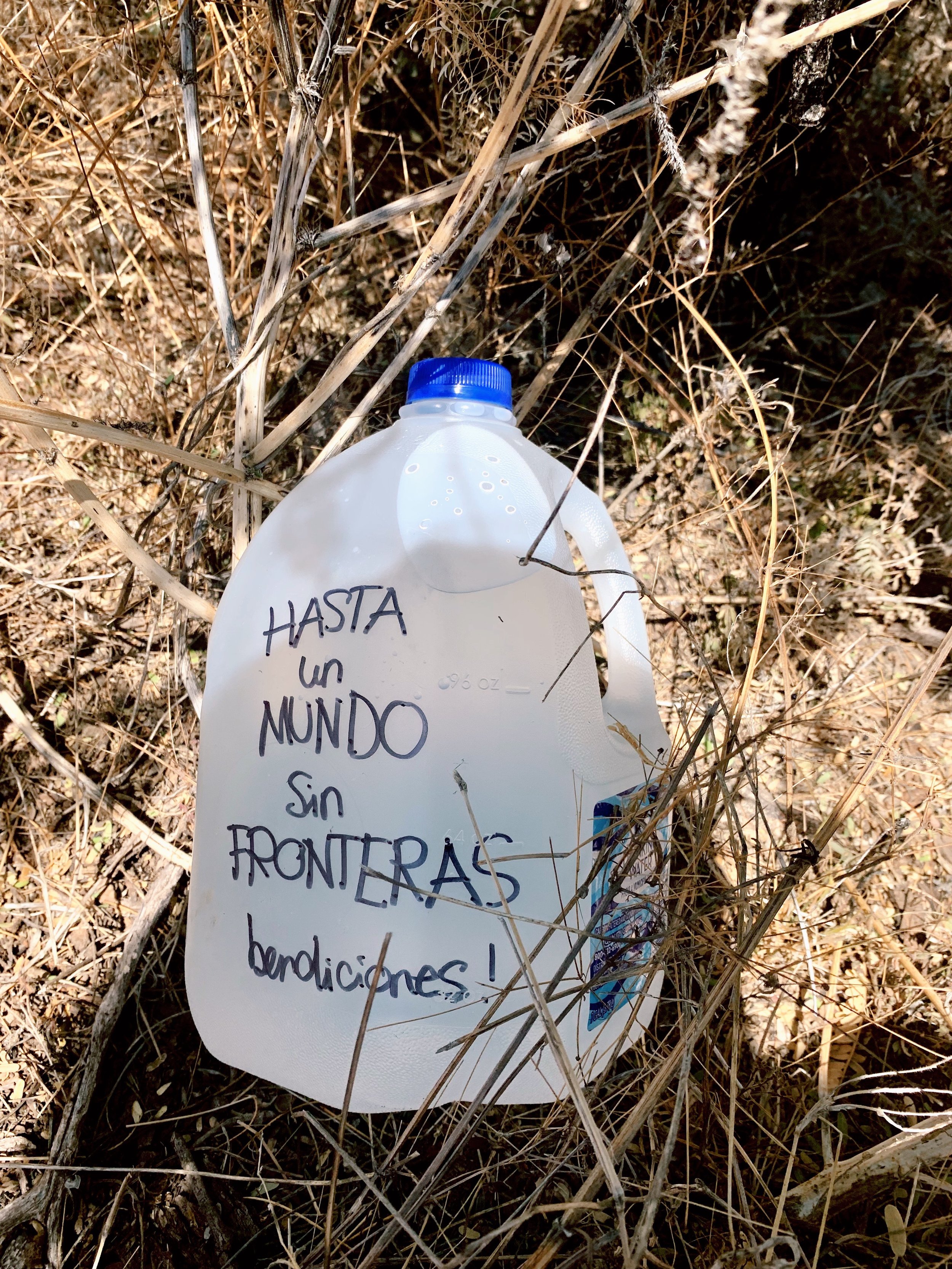Borrando La Frontera: Ana Teresa Fernández’s Transborder Communion
In Borrando La Frontera, a transborder communion performance, the artist Ana Teresa Fernández used powder blue paint to erase the US-Mexico border. This chapter considers the 2011 intervention and future iterations alongside a weekly border Eucharist organized by John Fanestil, suggesting that both yearn for a “lost intimacy” stolen by border walls and bars. While many scholars have recently turned their attention to devotional objects such as altars and prayer cards on the migrant trail, this chapter suggests that performance—its ephemerality and hapticality—opens up generative ways to think about the sacred and material religion. Fernández erased the border and, through the Eucharist, Fanestil transmutes the border. Their interventions suggest that religion is not only performed and material, but also imaginative and sensorial. Their religious practices dream of other worlds in the here and now. Read it here.
Escape-Bound: Juana Luz Tobar Ortega’s Fugitive Poetics in Southern Cultures
Juana Luz Tobar Ortega was the first undocumented migrant in North Carolina to enter sanctuary following the election of Donald Trump. This article shows how Juana’s experience in sanctuary exists as what Katherine McKittrick calls a paradoxical space—representing both escape and confinement, possibility and imprisonment. Grounded in traditions of marronage and abolitionist flight in the South, the essay highlights how fugitives imagine ways out and through, beyond and above the present. Time and time again, Juana creates her own freedom. The Guatemalteca organizes alongside other migrants to escape incarceration. She creates art and grows a garden. She fosters friendships and builds community. While sanctuary is often traced to the southwest and North American activist’s efforts to defend border crossers, this piece repositions Juana at the center—showing how she both receives and subverts sanctuary, how she is offered and, in turn, offers “radical hospitality” to other migrants facing deportation. Read it here.
Water, Not Walls: Towards a Religious Study of Life that Defies Borders in American Religion
In July 2019, the United States Government tried Scott Warren on felony charges for “harboring illegal aliens” and “conspiracy to transport and harbor illegal aliens.” No More Deaths, an abolitionist direct aid organization, insisted that the trial was a result of the government's criminalization of care. “Humanitarian Aid is Never a Crime,” they insisted. This article draws on ethnographic fieldwork conducted in Tucson during the summer of 2019 to argue that the gallon-sized water bottles used by aid groups and the heavy-duty black water bottles carried by migrants can help scholars interrogate the boundaries of “America” and “religion.” Despite militarized walls and barriers, people touch and commune across the Americas. Water bottles are sacred objects—criminalized, policed, destroyed—precisely because of their potential to facilitate such transborder intimacies. Read it here.


